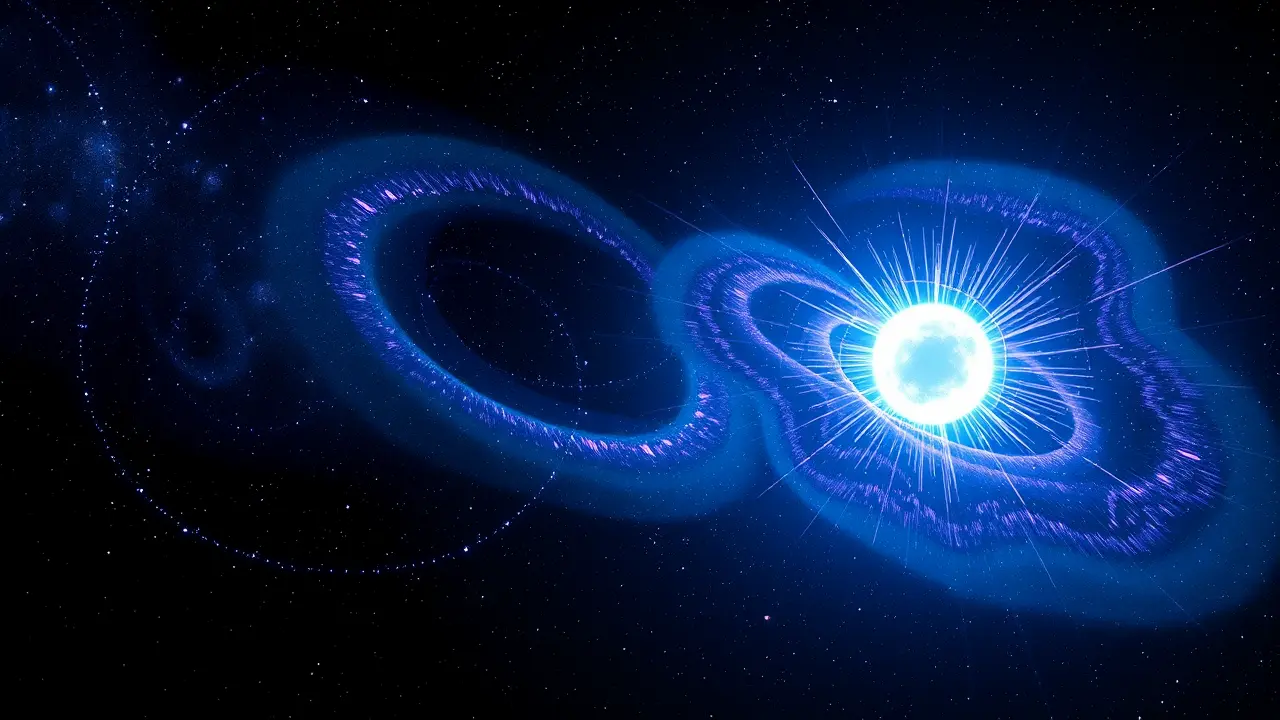
Sciencespace & astronomyAstrophysics Discoveries
A neutron star’s weird wind rewrites space physics
TH
Thomas Green
4 hours ago7 min read
In the grand cosmic theater where celestial objects perform their violent, beautiful ballets, neutron stars have long been cast as the most extreme prima donnas, capable of warping space-time itself with their immense density. Yet, a recent observation by the X-Ray Imaging and Spectroscopy Mission (XRISM) has thrown a cosmic wrench into our most fundamental astrophysical scripts, revealing a neutron star designated GX13+1 not as a shrieking diva but as a source of a surprisingly languid, almost contemplative wind.Instead of the anticipated high-velocity blast of particles, a tempestuous outflow driven by the sheer force of radiation that theory demanded, scientists were met with a slow, pervasive fog—a cosmic exhalation that fundamentally challenges our understanding of how energy sculpts the universe. This isn't merely a minor anomaly; it's a paradigm shift akin to discovering that hurricanes can, under certain conditions, manifest as a gentle, persistent drizzle, forcing a complete re-evaluation of the underlying physics.The prevailing model, which has guided astrophysicists for decades, posits that as matter from a companion star spirals onto the neutron star's surface in a superheated accretion disk, the resulting torrent of X-ray radiation should be so powerful that it literally blows material away in a furious, high-speed wind. But GX13+1, a resident of our galactic bulge, has defied this expectation, presenting a wind that is both denser and far more sedate than any model could account for.The leading hypothesis now emerging from the data is a more nuanced and intricate cosmic mechanism: it is not simply the raw power of radiation, but profound temperature differentials within the accretion disk itself that may be the primary architect of these outflows. Imagine the accretion disk not as a uniform, flat pan but as a dynamic, multi-layered atmosphere where the intense heat from the core creates powerful convection currents, and it is these differences—the hot spots versus the cooler regions—that generate the pressure gradients necessary to lift material away in this newly observed, fog-like state.This discovery carries monumental implications, suggesting that the very engines that feed these dense stellar corpses are far more complex thermodynamical systems than previously imagined. It rewrites the chapter on radiation-driven winds in the textbook of high-energy astrophysics and hints that similar processes could be at play around other compact objects, from stellar-mass black holes to active galactic nuclei, potentially altering how we model galactic evolution and the distribution of heavy elements forged in these cosmic cauldrons. The universe, it seems, continues to operate on a logic more subtle and sophisticated than our boldest theories, reminding us that every time we point a new telescope at the heavens, we are not just collecting data but listening for whispers in a conversation that has been ongoing for billions of years, and we have only just begun to understand the language.
#featured
#neutron star
#space physics
#accretion disc
#XRISM
#cosmic winds
#radiation-driven outflow
#GX13+1
Stay Informed. Act Smarter.
Get weekly highlights, major headlines, and expert insights — then put your knowledge to work in our live prediction markets.
Related News
© 2025 Outpoll Service LTD. All rights reserved.
